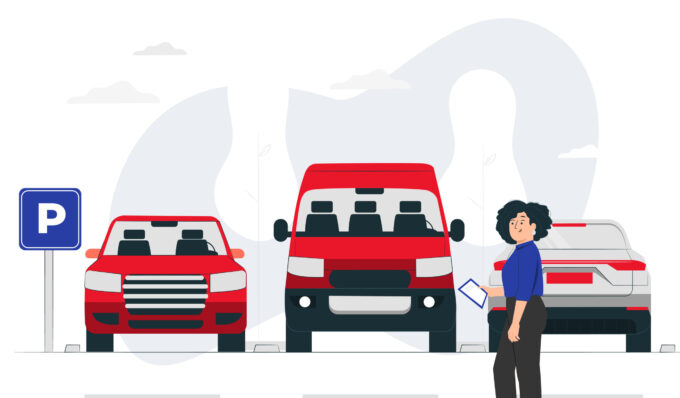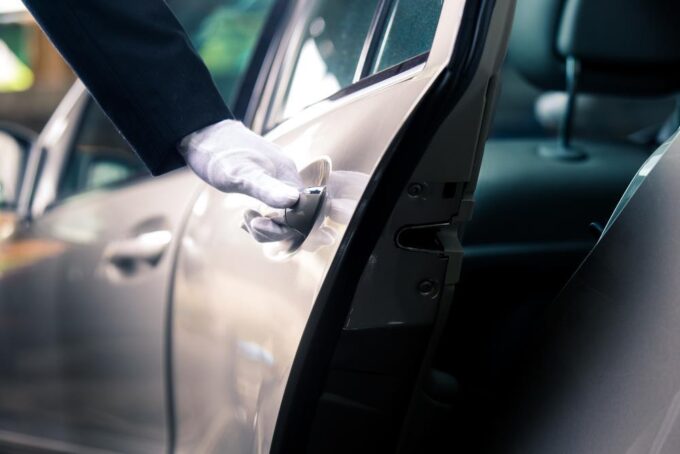In the dynamic realm of modern business, resource optimization stands as a cornerstone of achieving sustainable profitability. Transportation, as a fundamental operational component, wields significant influence over costs and efficiency.
When contemplating transportation solutions for executives or employees, organizations frequently encounter the pivotal choice between maintaining an in-house vehicle fleet or engaging a chauffeur service.
This comprehensive article embarks on a thorough cost-benefit analysis to ascertain which approach—between in-house transportation and chauffeur service—holds the key to greater profitability and operational success.
Understanding In-House Transportation

The in-house transportation model involves establishing and maintaining a fleet owned and operated by the company itself. This approach provides a heightened degree of control over scheduling and transportation processes, making it particularly apt for entities with consistent travel requirements.
Advantages of In-House Transportation
- Enhanced Control and Adaptability: Possessing an in-house fleet empowers the company with heightened control over routing, scheduling, and vehicle maintenance. This enhanced flexibility proves invaluable for seamlessly accommodating abrupt changes or addressing specific business exigencies.
- Strengthened Branding and Corporate Image: In-house transportation facilitates consistent branding through the use of meticulously customized vehicles adorned with the company logo and other distinctive visual elements.
- Long-Term Cost Management Benefits: Over an extended duration, the cost per trip could potentially experience a decline as fixed ownership costs are intelligently distributed across a multitude of journeys.
Aspects and Costs to Consider in In-House Transportation
- Considerable Initial Capital Outlay: The process of establishing an in-house fleet necessitates a substantial initial investment that encompasses critical aspects such as vehicle acquisition, comprehensive insurance coverage, and essential infrastructure setup.
- Persistent Ongoing Operating Costs: Sustained expenses associated with in-house transportation encompass a spectrum of crucial elements, including regular vehicle maintenance, fuel consumption, insurance premiums, and the compensation of dedicated drivers.
- Impact of Depreciation: The phenomenon of vehicle value depreciation over time significantly influences and potentially undermines the overall asset valuation of the company, necessitating astute financial planning and management strategies.
Exploring Chauffeur Services

In contrast, chauffeur services encompass the outsourcing of transportation needs to professional service providers equipped with skilled drivers and meticulously maintained vehicles. This alternative promises convenience and relieves companies from the burden of direct vehicle ownership.
Benefits of Chauffeur Services
- Mitigated Initial Investment: Opting for chauffeur services nullifies the need for extensive upfront investments in vehicles and associated infrastructure.
- Cost predictability: Because most chauffeur services charge fixed rates, businesses can precisely plan and budget their transportation costs.
- Concentration on Core Activities: By outsourcing transportation responsibilities, companies are empowered to allocate resources and efforts towards core business functions rather than fleet management.
Aspects and Costs to Consider in Chauffeur Services
- Higher Per-Trip Expenditure: Despite delivering convenience, chauffeur services may yield higher per-trip costs compared to in-house transportation, particularly for frequent travelers.
- Reduced Control: Organizations relinquish direct control over transportation logistics, which might pose concerns for entities with specific scheduling prerequisites.
- Limited Brand Visibility: Chauffeur service vehicles might not feature the company’s branding, potentially affecting brand exposure.
Quantifying Profitability: An In-Depth Evaluation of Costs and Benefits

The pursuit of profitability mandates a meticulous cost-benefit analysis. This entails an exhaustive evaluation of the total costs associated with each alternative and their juxtaposition with the benefits they confer.
Key Elements of Cost-Benefit Analysis
- Direct Costs: Accurate computation of direct costs spanning vehicle purchase, maintenance, fuel, driver compensation, insurance, and depreciation.
- Indirect Costs: The inclusion of indirect costs such as administrative overhead, time allocation for fleet management, and potential operational downtime due to vehicle maintenance.
- Benefits: Holistic assessment of advantages encompassing control, branding opportunities, operational flexibility, and the capacity to predict expenditure for both alternatives.
- Scalability: Evaluation of each option’s adaptability to evolving business demands and potential expansion.
Conclusion

In summary, the process of determining the most suitable transportation solution for an organization involves a comprehensive evaluation of the advantages and drawbacks associated with in-house transportation versus chauffeur services. Both options offer distinct benefits that can significantly impact a company’s profitability and operational efficiency.
In the case of in-house transportation, the advantages lie in the control it provides over scheduling, routing, and branding. The ability to adapt to sudden changes or specific business needs is a valuable asset, and the potential for long-term cost management through distributed ownership costs can lead to increased cost efficiency over time.
However, this model requires a substantial initial capital outlay for acquiring vehicles, insurance, and infrastructure. Ongoing operating costs, vehicle maintenance, fuel, and depreciation further contribute to the financial considerations.
On the other hand, chauffeur services offer a solution that minimizes the initial investment required. With fixed rates, companies can predict and budget transportation costs accurately.
This option allows businesses to concentrate their resources on core activities, while professional service providers manage the transportation logistics. Nonetheless, higher per-trip costs, reduced control over scheduling, and limited brand visibility are factors that must be weighed.

Conducting a comprehensive cost-benefit analysis is paramount in making an informed decision. The analysis should encompass both direct and indirect costs, including factors like vehicle purchase, maintenance, fuel, driver compensation, insurance, and depreciation.
Indirect costs such as administrative overhead, time dedicated to fleet management, and potential operational downtimes must also be considered. Benefits, ranging from control and branding to adaptability and scalability, should be evaluated for both alternatives. Ultimately, the choice between in-house transportation and chauffeur services is not a one-size-fits-all decision.
The optimal approach hinges on the specific needs, aspirations, financial capabilities, and operational requirements of the organization. Whichever path is chosen, a meticulous examination of costs and benefits will ensure that transportation not only contributes to the company’s financial success but also streamlines its overall business operations.
In conclusion, the dynamic interplay between costs, benefits, and operational needs underscores the importance of this decision. A well-rounded analysis will enable businesses to make a well-informed choice that aligns with their strategic goals, while simultaneously enhancing their bottom line and operational agility in an ever-evolving business landscape.









